Artnet Auctions
A New Sale Highlights Andy Warhol’s Pre-Pop Art
Artnet Auctions's Co-Head of Post-War and Contemporary Art Johannes Vogt selects highlights from a new sale, live for bidding through June 20.
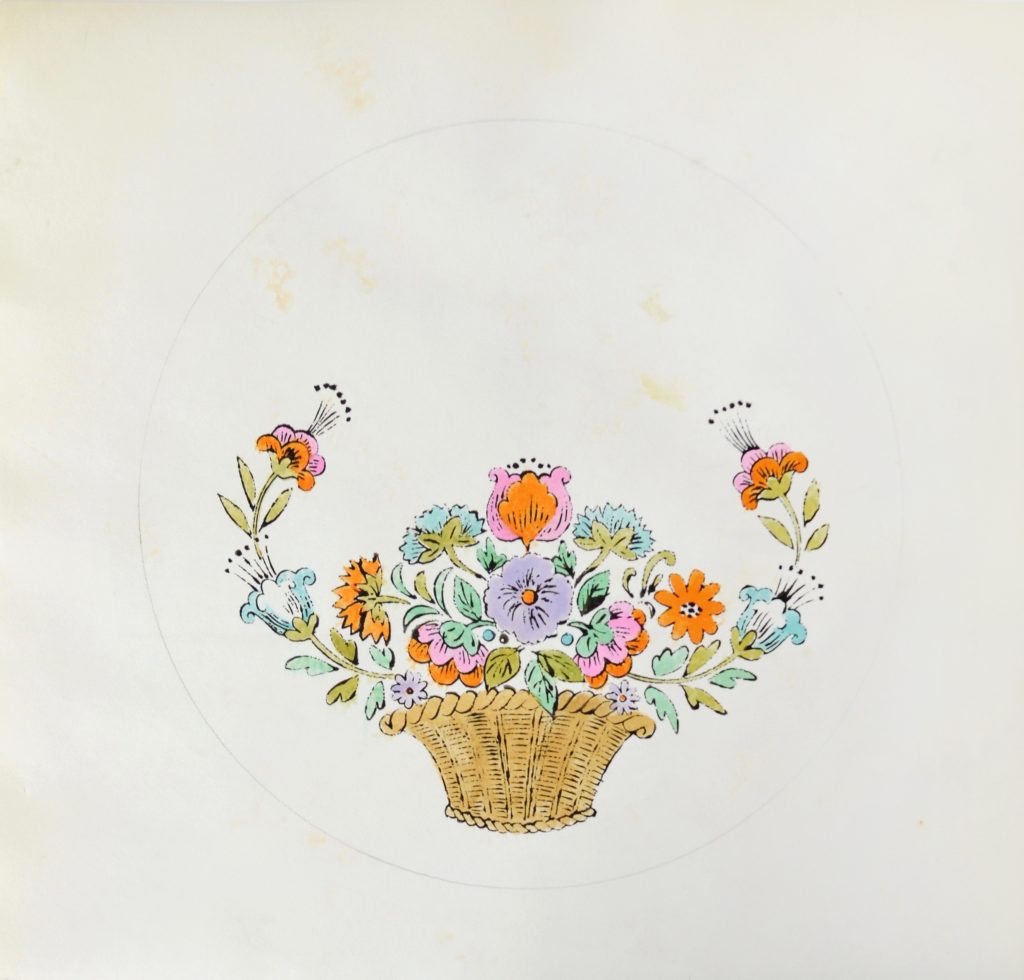
Artnet Auctions's Co-Head of Post-War and Contemporary Art Johannes Vogt selects highlights from a new sale, live for bidding through June 20.

Artnet Auctions

There is perhaps no name in the art world more synonymous with fame, celebrity, and pop culture than Andy Warhol. A pioneer and bastion of Pop art—and 20th-century art on the whole—Warhol’s oeuvre has been exhibited worldwide and studied extensively, however, one aspect of his creative practice that has gone less recognized are his earliest works on paper. These works are currently the focus of the Artnet Auctions sale Andy Warhol by Hand: The 1950s, live for bidding now through June 20, 2024.
Marking the occasion, we caught up with Artnet Auctions Co-Head of Post-War and Contemporary Art Johannes Vogt to learn about this lesser-known facet of Warhol’s career, and just what makes this sale so special.

Johannes Vogt, Co-Head of Post-War and Contemporary Art.
Can you tell us a bit about the forthcoming Andy Warhol sale, what will be included, and its significance?
The auction is intimate in scale, with just under 30 lots. The focus lies on Andy Warhol’s very early original works on paper, a period many Warhol aficionados like to call “Andy Warhol before Warhol,” meaning pre-Pop. The artist was drawing incessantly, both for his personal projects as well as for commercial purposes. These works let us see the artist’s hand, his draughtsmanship and abundance of creativity paired with his early interest in repetition of subject matter. Considering the vast number of Warhol exhibitions and scholarship, little has been done to date to bring these private, early renderings by the artist to a broader audience. This is why we are excited to bring such rare-to-the-market works to our collectors in this special auction. Much effort has gone into the research and groupings of lots under certain umbrella terms. The essay for each lot provides in-depth insight into the genesis of each work and their placement within Warhol’s oeuvre of the 1950s.
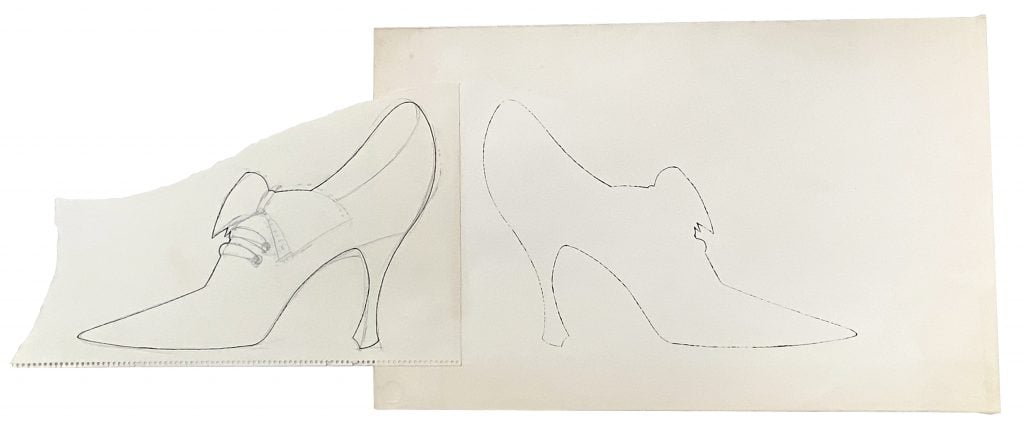
Andy Warhol, Shoe (ca. 1950). Est. $18,000–$25,000.
As the works all date from the same period, can you describe Warhol’s life and practice during this time?
When Warhol moved to New York in the very late 1940s, he starts making a living with creative work in the advertising world and soon becomes known for his skills in making unique sketches of shoes for designers and department stores. Meanwhile, the artist is looking to establish himself in the fine art scene by submitting portrait studies in an intimate style and with ostensibly gay iconography to various galleries—with little success.
Some of his drawings of male models that he made for his artist book A Boy Book were presented at the Bodley Gallery in New York in 1956; Young Man in Profile is an example of this series. Warhol frequented the studio of New York photographer Otto Fenn, who had positioned himself at the epicenter of a community of creative circles of gay men in the city. Warhol encountered many of his male models for his drawings at these occasions.
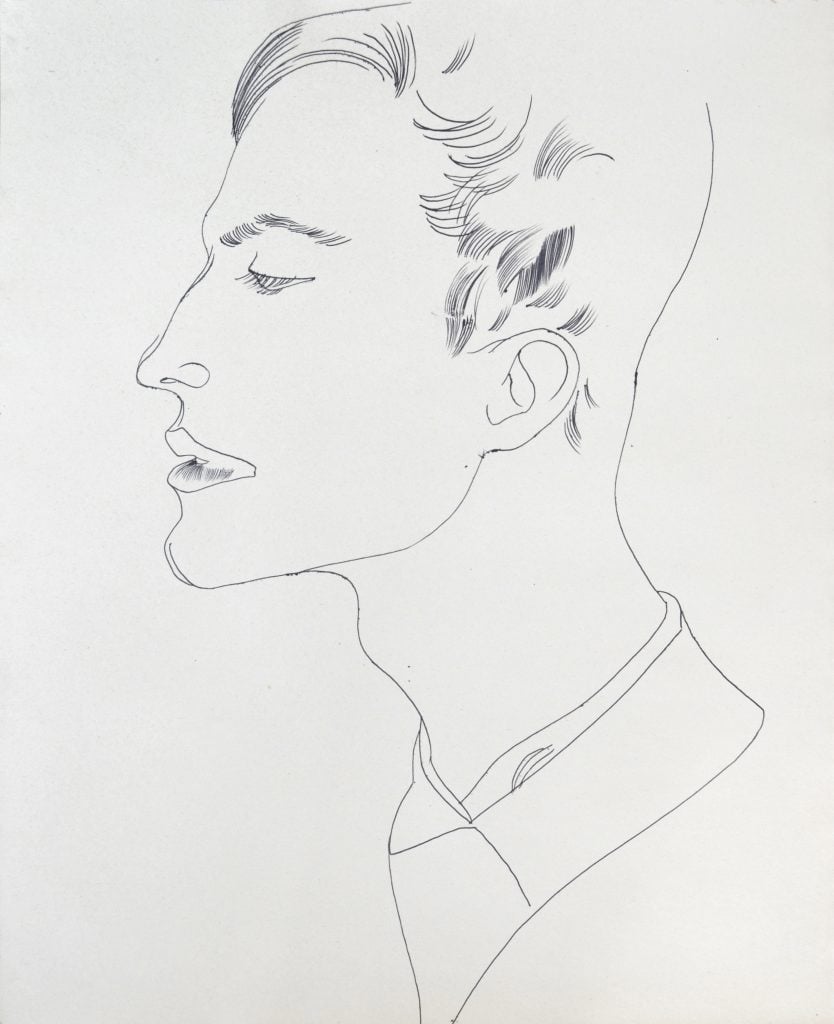
Andy Warhol, Young Man in Profile (ca. 1956). Est. $15,000–$20,000.
What is one thing that collectors—both new and seasoned—should know about works on paper by Warhol specifically?
The most fascinating thing about these works from the 1950s for me is that their story is in many respects yet to be told. While Warhol’s work from 1960 onward has been studied widely and is a constant stalwart in the stratospheric segments of the auction market, these hand-made works offer a glimpse into a very personal, one might say vulnerable angle of the artist’s personality, a private person who would soon create a public persona to shield off any insights into his intimate thoughts and work processes. To illustrate the many different facets of his creative output during these years, we have structured the auction into specific themes, such as fashion, flowers, portraits, and his book projects, among others.
From a personal perspective, what does Warhol mean or represent to you?
Early in my career, I had the wonderful opportunity to study Warhol’s work closely while working as assistant curator at Munich’s Pinakothek der Moderne. Bob Colacello’s Holy Terror (1990) and other publications that offered insights into the artist’s personal life and history triggered an increasing interest and fascination with his oeuvre.
Warhol is an artist of extreme versatility. His creative drive was insatiable and oozed through every facet of his daily life. The factory, his movies, the time capsules, the phone call logs, the commissioned portraits, the polaroids, the community he created, all these elements truly make him a one-of-a-kind representative of not just an artistic era but truly of culture per se. He embodies the romantic idea of the artist genius just as much as that of a highly skilled and market savvy entrepreneur who knew how to maneuver through the waters of the international high society.
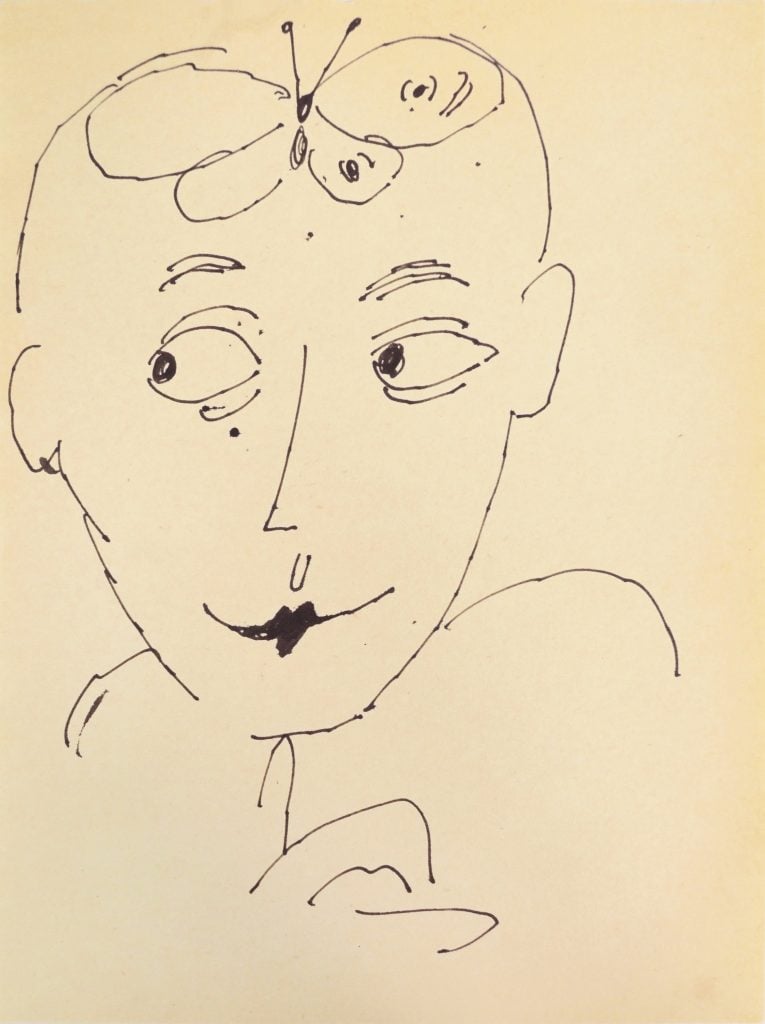
Andy Warhol, Butterfly Lady (1953). Est. $70,000–$100,000.
If you could keep one lot from the sale, what would it be and why?
I would most certainly choose the Butterfly Lady (1953). There are only a handful of drawings in this style that show a figure with rather androgynous facial features whose forehead is adorned with a butterfly. It is seemingly not a portrait of a sitter; it is difficult to picture a photo of this character, which triggers many questions. Butterflies were an early obsession of the artist’s and find great attention within the dedicated Warhol community. It is fair to assume that the artist is picturing himself here in “low drag” (as recent scholarship shows) long before he would find the courage and self-assuredness to pose for the camera in a wig, let alone circulate polaroids of himself in drag. The subdued and secret nature of this piece just strikes me and speaks to my fascination for the more hidden facets of Warhol’s personality.
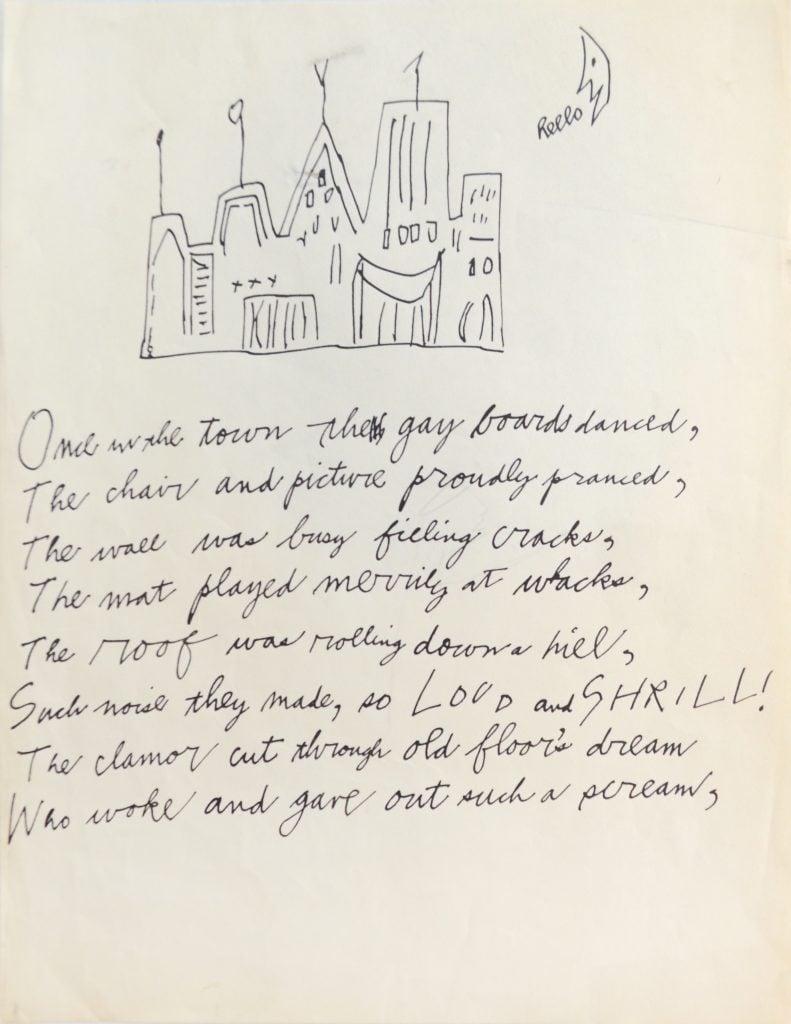
Andy Warhol, The House That Went to Town (ca. 1956). Est. $12,000–$18,000.
As the co-head of Post-War and Contemporary Art at Artnet Auctions for more than five years, have you observed any changes in the Warhol market over the course of your tenure, or in your overall time in the industry?
The Warhol market has most certainly been on a clear upward trajectory since his passing, with certain periodic milestones, such as the monumental exhibition at the Whitney Museum of American Art in 2018. His two- and three-digit million-dollar records aside, I’ve been observing the rise in value of his commissioned portraits over recent years. Warhol charged a flat fee of $25,000 for a 40-by-40 inch canvas in his signature style. Some five years ago, these non-celeb portraits were trading for around $100,000 tops. Nowadays, they are trading for $300,000 upwards. Any “pretty blonde” can now fetch even far more—with little regard to the name and background of the person portrayed. Warhol would be thrilled to witness this development. His fame is now outshining most everyone else’s.
Let me close with an added remark to the 2018 Whitney show: Warhol’s early drawings were featured extensively in this landmark exhibition, and that was one of the elements I loved most about it.
Andy Warhol by Hand: The 1950s is now live for bidding through June 20, 2024.